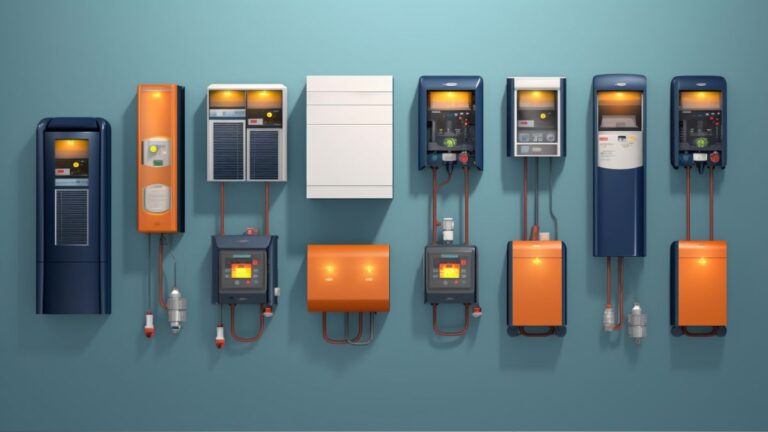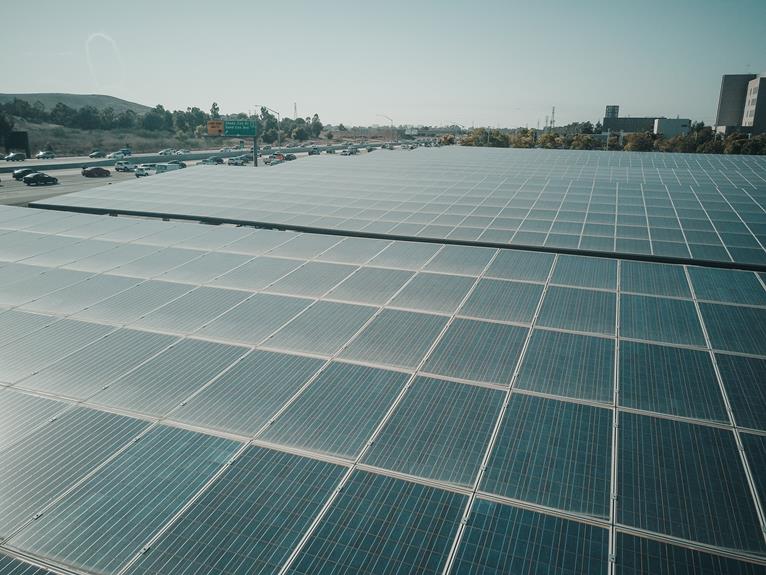The Future of Solar Power Grid Integration: 14 Essential Tips
Did you know that solar power is projected to account for 40% of the world’s electricity by 2040? If you’re interested in harnessing the power of the sun and integrating it into the grid, this article is for you. Discover 14 essential tips for successful solar power integration into the grid, from overcoming challenges to maximizing output.
Stay ahead of the curve and join the movement towards a sustainable future with these valuable insights.
Key Takeaways
- Implementation of microgrid solutions is crucial for effective grid integration.
- Advanced technologies like AMI, DER, BESS, and microgrids are essential for decentralized energy production and storage.
- Supportive policy environment and clear regulatory framework are necessary for successful grid integration.
- Maximizing solar power output can be achieved through regular maintenance, high-efficiency panels, energy storage, and optimized system design.
Grid Integration Challenges
You will face numerous challenges when integrating solar power into the grid. One of the main challenges is the implementation of microgrid solutions. Microgrids are localized grids that can operate independently from the main power grid. They’re a promising solution for integrating solar power because they allow for better management of the fluctuating nature of solar energy. However, the integration of microgrids into the existing grid infrastructure can be complex and require careful planning and coordination.
Another challenge is energy storage. Solar power is intermittent, meaning it isn’t consistently available throughout the day. To ensure a constant and reliable power supply, energy storage systems are necessary. These systems store excess solar energy during peak production and release it during times of low production or high demand. However, energy storage technologies are still evolving, and finding cost-effective and efficient solutions can be challenging.
Emerging Technologies
Implementing emerging technologies is crucial for the future of solar power grid integration. As the demand for renewable energy continues to grow, smart grids and energy storage are becoming essential components in ensuring the effective integration of solar power into existing electrical grids. Here are some key emerging technologies that will shape the future of solar power grid integration:
- Advanced Metering Infrastructure (AMI): AMI allows for real-time monitoring of energy usage, enabling better management and optimization of solar power generation and consumption.
- Distributed Energy Resources (DER): DER technologies, such as rooftop solar panels and small-scale wind turbines, allow for decentralized energy production, reducing reliance on traditional power plants.
- Battery Energy Storage Systems (BESS): BESS can store excess solar energy for later use, providing reliable power during periods of low solar generation or high demand.
- Microgrids: Microgrids are self-contained electrical systems that can operate independently or in coordination with the main grid, allowing for localized solar power generation and distribution.
Policy and Regulatory Considerations
When considering the future of solar power grid integration, it’s essential to take into account policy and regulatory considerations.
The policy implications and regulatory framework surrounding solar power are critical factors that can shape its growth and development.
Governments play a pivotal role in setting policies and regulations that govern the deployment of solar power systems, incentivizing investments, and ensuring fair competition in the market.
Policy implications can range from providing financial incentives and tax credits to implementing net metering and feed-in tariff programs.
The regulatory framework encompasses the rules and regulations that govern the interconnection process, grid integration, and power purchase agreements.
Ensuring a supportive policy environment and a clear regulatory framework is crucial for the successful integration of solar power into the grid and achieving a sustainable energy future.
Maximizing Solar Power Output
To optimize solar power output, focus on efficient utilization of resources and proper system maintenance. Here are some essential tips for maximizing solar power output:
- Regularly clean and maintain solar panels: Dust, dirt, and debris can reduce solar panel efficiency. Regular cleaning and maintenance will ensure optimal performance.
- Invest in high-efficiency solar panels: Higher efficiency panels convert more sunlight into usable energy, increasing overall power output.
- Consider energy storage solutions: Energy storage systems allow excess energy generated during the day to be stored and used during non-sunlight hours, maximizing power output.
- Optimize system design: Properly sizing and positioning solar panels, as well as utilizing shading analysis, can significantly improve solar power output.
By implementing these strategies, you can maximize solar power output and ensure the efficient utilization of resources.
Regular maintenance, investing in high-efficiency panels, utilizing energy storage solutions, and optimizing system design are crucial for achieving the best results from your solar power system.
Future Trends and Innovations
To stay ahead in the ever-evolving solar power industry and maximize your system’s potential, you need to embrace future trends and innovations.
One key trend is the increasing focus on future investments in solar power. As technology advances and costs continue to decrease, investing in solar energy systems has become more attractive. This includes not only investing in the installation of solar panels but also exploring new business models and financing options.
Another important innovation to consider is energy storage. As solar power generation relies on sunlight availability, storing excess energy during the day for use during periods of low sunlight can significantly enhance the reliability and efficiency of your system. Energy storage solutions, such as batteries, are becoming more affordable and efficient, making them a promising investment for the future.
Conclusion
In conclusion, the future of solar power grid integration holds immense potential for addressing the challenges faced by renewable energy sources.
A fascinating statistic reveals that by 2030, it’s estimated that solar photovoltaic (PV) systems could provide up to 14% of global electricity demand, significantly reducing carbon emissions.
As emerging technologies, policy considerations, and innovative trends continue to shape the solar industry, it’s crucial to maximize solar power output and ensure seamless integration into existing grids for a sustainable energy future.






